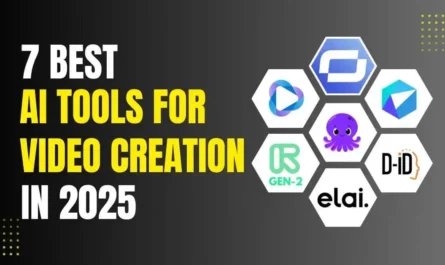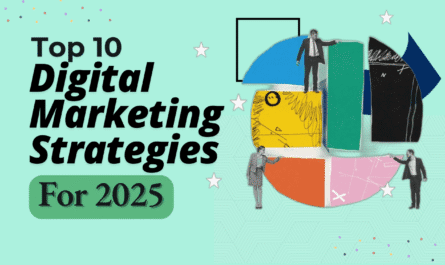Introduction to Facebook Ads
Facebook Ads have revolutionized digital marketing for more than a decade. In 2025, despite new platforms like TikTok and Threads gaining momentum, Facebook Ads continue to dominate the social media advertising space. With over 3 billion monthly active users, Facebook remains the most powerful channel for businesses to reach their ideal customers through data-driven advertising.
The platform offers precision targeting, flexible budgets, and measurable results—making it indispensable for marketers aiming to maximize ROI. Whether you’re a small business or a large enterprise, understanding how to leverage Facebook Ads effectively can help you drive conversions, boost engagement, and skyrocket your sales.
Why Facebook Ads Still Matter in 2025
Facebook Ads continue to deliver high returns because of their unmatched audience reach and detailed targeting capabilities. According to Meta’s 2025 report, advertisers can reach over 2.2 billion people monthly through Facebook Ads alone.
Some of the main reasons Facebook Ads are still crucial:
- Advanced Targeting: Facebook’s AI-driven system learns user behavior and optimizes campaigns in real-time.
- Cross-Platform Reach: Ads can appear across Facebook, Instagram, Messenger, and Audience Network.
- High ROI: Small businesses can start with as little as $5 per day and still achieve measurable growth.
In 2025, Facebook is introducing AR-powered ads and AI-based creative optimization, making it easier than ever to reach the right people with the right message.
How Facebook Ads Work
Facebook Ads operate within the Meta Ads Manager, a centralized platform that controls all campaign elements:
- Campaign Level: Define your objective (traffic, leads, conversions, etc.).
- Ad Set Level: Choose targeting, budget, and schedule.
- Ad Level: Create visuals, write copy, and set your call-to-action (CTA).
Once published, Facebook’s algorithm determines who sees your ads based on engagement history, relevance score, and bidding strategy.
Types of Facebook Ads
Choosing the right ad type is crucial to achieving campaign success:
- Image Ads: Ideal for brand awareness and engagement.
- Video Ads: Great for storytelling and demonstrating product value.
- Carousel Ads: Showcase multiple products or features in one ad.
- Story Ads: Immersive vertical ads for mobile audiences.
- Collection Ads: Perfect for eCommerce, allowing users to browse directly in-app.
Setting Up a Winning Facebook Ad Campaign
Here’s a simple guide to get started:
- Go to Meta Ads Manager.
- Select your campaign objective (e.g., traffic or conversions).
- Define your audience targeting.
- Set your budget and schedule.
- Create your ad creative (image/video + copy).
- Review, publish, and monitor performance.
💡 Pro Tip: Always start with a small test budget before scaling.
Targeting the Right Audience
Facebook offers detailed targeting based on:
- Demographics: Age, gender, location.
- Interests: Hobbies, pages liked, and engagement activity.
- Behaviors: Online shopping habits, device usage, etc.
- Lookalike Audiences: Reach new users similar to your best customers.
Precise targeting ensures your ads are shown to people most likely to convert—saving you money and boosting ROI.
Crafting High-Converting Ad Copy
Effective ad copy can make or break your campaign. Focus on clarity, emotion, and urgency:
- Use strong action verbs.
- Highlight benefits, not just features.
- Include a compelling call-to-action like “Shop Now” or “Learn More.”
Example:
“Stop scrolling! Discover the latest fashion trends that make heads turn. Shop Now and get 20% off.”
Designing Scroll-Stopping Facebook Ad Creatives
Visuals capture attention instantly. Use:
- High-quality, vibrant images.
- Consistent brand colors and fonts.
- Minimal text overlay.
- Engaging visuals that align with your message.
A/B test multiple creatives to discover what resonates best with your audience.
Budgeting and Bidding Strategies
You can choose between:
- Daily Budget: Spend a set amount each day.
- Lifetime Budget: Spend across a campaign duration.
Facebook’s CPC (Cost Per Click) and CPM (Cost Per Mille) models allow flexible bidding. Always analyze ROI and adjust spending based on performance.
A/B Testing for Better Results
Test variations of:
- Headlines
- Images/Videos
- Audience Segments
- CTA Buttons
This helps refine your campaigns and boost conversion rates significantly.

Key Facebook Ad Metrics to Track
Monitor these key performance indicators (KPIs):
| Metric | What It Means |
|---|---|
| CTR (Click-Through Rate) | Measures engagement and relevance. |
| CPC (Cost Per Click) | Cost per individual click. |
| ROAS (Return on Ad Spend) | Total revenue generated per dollar spent. |
| Conversion Rate | Percentage of users completing a desired action. |
Common Mistakes to Avoid
- Ignoring audience insights.
- Using poor-quality visuals.
- Neglecting ad testing.
- Failing to track conversions.
Avoid these pitfalls to ensure your campaigns are profitable.
Retargeting with Facebook Pixel
The Facebook Pixel helps track visitor behavior on your website. You can:
- Retarget users who visited your site but didn’t purchase.
- Create custom audiences based on user actions.
- Improve ad optimization through conversion tracking.
Advanced Facebook Ads Strategies for 2025
Leverage new innovations:
- AI-Driven Optimization: Facebook’s AI now auto-adjusts creative elements.
- Dynamic Ads: Automatically promote products based on user interest.
- Automated Rules: Schedule budget increases when ROAS improves.
Facebook Ads vs. Instagram Ads
Both platforms are powerful, but:
- Facebook Ads: Better for older demographics and desktop traffic.
- Instagram Ads: Ideal for younger, visual-oriented audiences.
Integrating both under one campaign can yield the best results.
Best Tools to Optimize Your Facebook Ads
Use these tools for maximum performance:
- Canva / Adobe Express: For ad design.
- Hootsuite Ads: For campaign management.
- Google Analytics & Meta Insights: For performance tracking.
For deeper insights, visit Meta Business Help Center.
FAQs About Facebook Ads
1. How much does it cost to run Facebook Ads?
It depends on your goals, but you can start with as little as $5/day.
2. Are Facebook Ads effective for small businesses?
Yes, Facebook’s targeting and affordability make it perfect for startups.
3. How can I improve my Facebook Ad performance?
Test creatives, refine targeting, and monitor KPIs regularly.
4. How long should I run a Facebook Ad?
Run ads for at least 7 days to allow the algorithm to optimize.
5. What is a good ROAS for Facebook Ads?
A 4:1 ratio (earning $4 for every $1 spent) is considered excellent.
6. Do Facebook Ads work better than Google Ads?
It depends on your goal—Facebook excels in brand awareness and lead generation, while Google dominates intent-based searches.
Conclusion
Facebook Ads remain one of the most powerful tools in digital marketing. By mastering targeting, creatives, and analytics, businesses can harness Facebook’s immense reach to grow faster and smarter in 2025. Whether you’re promoting a product, service, or brand, Facebook Ads can be your ultimate growth engine.



